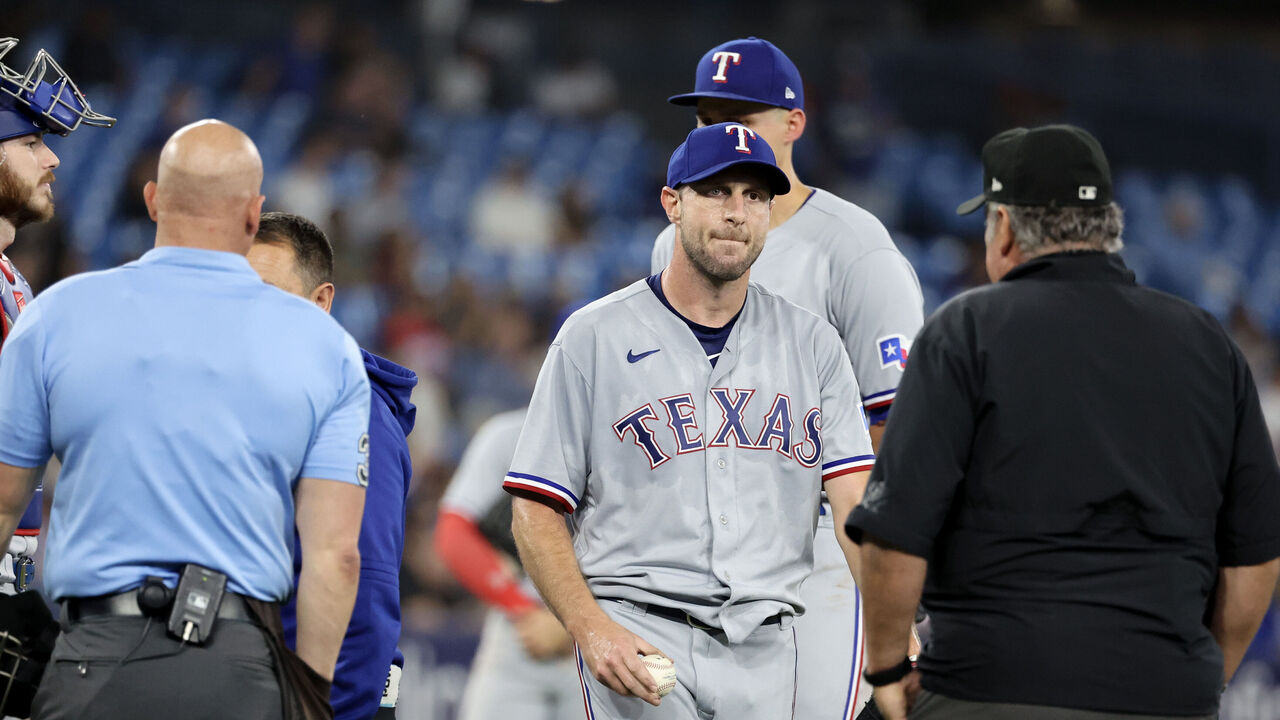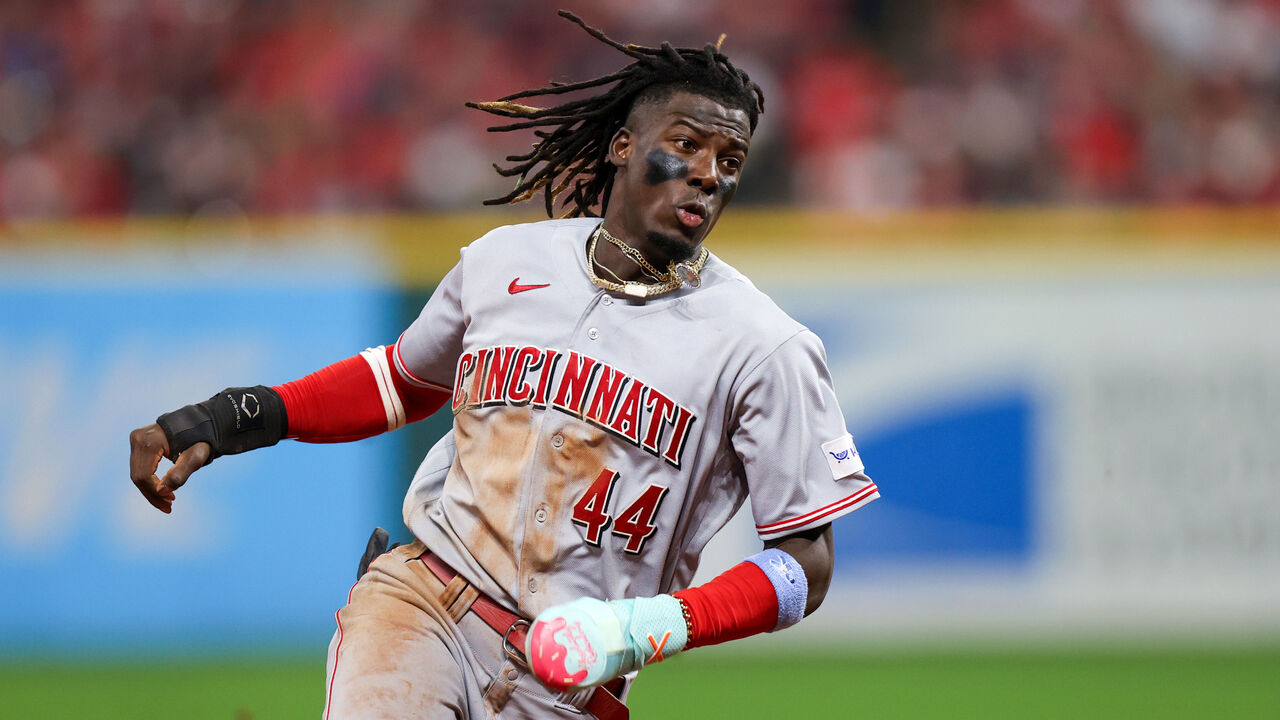MLB's most unlikely breakout, 8 more observations
Starting Lineup is a biweekly collection of reporting, observations, and insights from the baseball beat, published every other week during the regular season.
Leading off ...
Mason Miller's rise to become the hardest-throwing pitcher in the majors and one of the more dominant closers in the game is a remarkable early-season story.
In moving to a bullpen role - at least temporarily - to better preserve his arm, Miller's fastball is averaging 100.7 mph this year. He's hit 104 mph. Those are the best marks in the majors.
He's already recorded six saves and made MLB hitters look overmatched, striking out 23 in 11 1/3 innings. The righty has a 1.59 ERA and is one of the few bright spots for the Oakland A's.
But no one had heard of Miller just a few years ago. Few players in recent memory have ascended quite like him.
Miller was a sophomore at Division III Waynesburg (Pa.) College in 2018, posting a 7.16 ERA at a level of NCAA baseball where scholarships aren't even offered. During that season, he wondered why he was so tired and losing weight. A urine sample required for a finance internship with Allegheny Health Network revealed an alarmingly high blood sugar level.
He was diagnosed with Type I diabetes.

"I think there was some unknown, and that's always a little scary," Miller said. "It's pretty manageable as far as diagnoses go. I am in exclusive and full control over what I eat and how it affects my sugar. I'm fortunate to have great tech that monitors it, and it makes it pretty easy. The adjustment was fairly seamless.
"I'm blessed that it happened when I was older as opposed to kids at, say, age 10, and that's really hard for them when they are not in a position to take care of themselves. Their parents have to."
The diagnosis changed everything for the suburban Pittsburgh native.
Miller began giving himself daily insulin injections. He regularly monitors his blood sugar using an app on his phone, which updates every five minutes and connects to a monitoring device on his left arm.
He also changed his diet. As a junior, Miller quickly added 35 pounds, advancing from 150 pounds to 185. He now stands at 6-foot-5, 235 pounds. With his added weight came added velocity.
"The first time I had anything clocked above 90, the other team had a radar gun - we didn't have one," Miller said. "We had guys up there in the press box who did the scoreboard and charted pitches. My buddy was up there doing the board and (saw the radar gun readings)."
His teammate rushed down between innings to relay an urgent message to Miller: He'd been clocked at 94 mph.
Miller dropped his ERA to 1.86 that season. COVID essentially wiped out his senior campaign, but he was given an extra year of eligibility in 2021 and transferred to Gardner-Webb, a small Division I school. Miller began raising eyebrows on the fringe of the scouting trail, and the A's drafted him in the third round.
His velocity kept climbing.
"After I got drafted, I hit 100 (mph). That was pretty cool," Miller said.
101 with that movement?! 😳
— MLB (@MLB) April 26, 2024
Mason Miller is unfair 🔥 pic.twitter.com/xv8PWef67z
Injuries limited him in 2022, but he dominated in Triple-A early last season by striking out 23 in 12 innings and was called up to Oakland in April. Miller was off to a promising start before an elbow strain sidelined him.
He said he's "cleaned up" his mechanics since joining the A's, which might explain some of his MLB-best velocity. Miller's college studies in finance - he has a master's degree in business administration - have helped him navigate the data avalanche in pro baseball. He also tries to emulate the characteristics of pitchers such as Gerrit Cole and enjoys watching the condensed starts of pitchers he admires.
"I think (Cole) is really good at being linear down the mound. There's not a lot of unnecessary movement," Miller said. "I think the less you have to think about, the less you are doing, the easier it is to repeat it."
While he's focused on details of improving performance, Miller said he wouldn't be here without that diabetes diagnosis as a sophomore.
Whether he remains a closer long term is yet to be determined. What's clear is that Miller has arrived as an impact arm.
"I enjoy this role. We are doing it for health reasons," Miller said. "We are just focusing on this year, and we'll see how the chips fall after it."
No. 2: Max Scherzer's umpire plan
While it's not an easy job to determine whether a darting 90-mph slider or 99-mph fastball grazed the corner of the strike zone, umpire performance could be better. In some cases, a lot better.
What's there to do about it? Technology can certainly determine balls and strikes with 100% accuracy given the correct strike-zone parameters. MLB is experimenting with automated zones and challenge systems in the minors.
But even if one doesn't want a robot ump behind the plate, there are ways to improve the human element.
We know MLB doesn't always place its best performers behind the plate and that calling balls and strikes is a skill that doesn't age well.

Texas Rangers pitcher Max Scherzer shared an interesting idea after a rehab start this week.
Scherzer doesn't want to eliminate human umpires - or he's at least being savvy while still an active pitcher - but he does want the standard raised.
"We need to rank the umpires," Scherzer said. "We need to have a conversation about the bottom 10%, or whatever you want to say the bottom is, and relegate those umpires to the minor leagues. That way the umpires are going against themselves. There's still a human element in how we rank umpires. Policing the bottom is the way to go."
No. 3: Cold front
It's early and can still feel like winter at first pitch in many places in the Northeast and Midwest. But it's interesting to see MLB hitters with a collective sub-.700 OPS (.699) entering play Friday. There hasn't been a sub-.700 OPS mark for a season since 1989 (.695).
What's also interesting is hitters' walk rates are slightly up while strikeout rates are slightly down. So, this is a product of a power outage.
MLB hitters are slugging a paltry .384. It's early, but average exit velocity, barrel rates, and home run-to-fly ball rates are down from last season. Have the characteristics of the ball changed again? Are more hitters than usual slumping? Have pitchers made more skill gains? It's something to keep an eye on.
No. 4: Elly's other remarkable skill
There's not a more exciting or talented player in baseball than the Cincinnati Reds' young star, Elly De La Cruz. He's been arguably the best player in the majors in April. He's in the 90th percentile or higher in average exit velocity and hard-hit rate.
One thing I learned in profiling him last spring is how quickly he improved and adapted to each minor-league level. He's the quickest of studies.

While regression will likely come to some degree for De La Cruz, he appears to be making real gains in his swing decisions, which is a terrifying prospect for opponents. He's cut his out-of-zone swing percentage by eight points to 27% this year.
Elly De La Cruz is making Juan Soto-esque swing decisions in the last 2 weeks
— Thomas Nestico (@TJStats) April 24, 2024
Yes, you read that right pic.twitter.com/3z8wwiX0vn
De La Cruz could own the highest ceiling in the game if he continues to be mindful of his strike zone.
No. 5: An amazing Mike Trout stat
Speaking of zone discipline and how it can help unlock physical gifts, Mike Trout has swung at just one pitch above the strike zone since 2018. (And that was a check swing on a borderline offering in 2022).
As remarkable as Trout's athletic skills and power are, his zone discipline is another superpower. He knows where his compact, powerful swing does the most damage - lower in the zone - and essentially only swings in those areas. If he can stay healthy, Trout is demonstrating he still enjoys superstar talent. Hopefully, a contender can pry him away from the Angels this summer.

No. 6: Too close to call?
The Dalton Varsho for Gabriel Moreno and Lourdes Gurriel Jr. trade was a good old-fashioned deal last offseason, trading major-league players from areas of surplus to address areas of need.
Last postseason, when Moreno was helping the Diamondbacks to a surprise World Series run and impacting the game on both sides of the ball, it appeared Arizona had fleeced the Toronto Blue Jays. Gurriel - the throw-in player - even produced a better WAR than Varsho in the regular season. But with Varsho's bat rebounding early this year, he's looking more like the 5.0-WAR player he was in 2022.

Varsho accumulated 1.5 fWAR this season prior to Friday's game, nearly matching his total from last year (2.1). With Moreno struggling to generate much power early this season, the trade suddenly looks more balanced. And it'll likely still appear that way even if Moreno's bat begins to warm up.
No. 7: Speaking of Varsho
Varsho leads major-league outfielders in defensive runs saved this season (seven). Since 2022, he enjoys a large lead over the second-ranked outfielder, Steven Kwan (55 to 33).
While Varsho owns his share of spectacular grabs, he makes tough catches appear only modestly challenging.
Consider this grab from this week.
This is one of those plays that Daulton Varsho makes look way easier than it actually was.
— Chris Black (@DownToBlack) April 25, 2024
*5% catch probability
*Jump 10 feet better than league average
Give this man a gold glove. pic.twitter.com/RGM1GF624o
It might not appear on a nightly top-10 highlight reel, but it was a remarkable catch. The play required making a correct read, avoiding a false first step, running a perfect route, and making a diving catch.
I'd like to see Varsho full time in center field for the Jays. That would open up more offensive firepower to a corner spot. He'll get more time there for a few weeks with Kevin Kiermaier on the injured list.
But wherever Varsho plays, the Jays look like they added the player they thought they were getting last winter.
No. 8: Trouble
The St. Louis Cardinals are a mess.
They're not hitting. Paul Goldschmidt is showing signs of decline. Former top prospect Jordan Walker struggled so badly that he's back in the minors. And while the Cardinals have improved their pitching rotation, they still have too few bat-missing arms.

St. Louis entered play Friday ranked 25th in run differential (minus-26). Which teams are worse? The Chicago White Sox (minus-85), who are being outscored by 3.4 runs per game, the Colorado Rockies (minus-56), Miami Marlins (minus-47), Athletics (minus-38), and Houston Astros (minus-38).
Last May, I wrote about how Houston was in the early stages of decline because of the brain drain in the front office, a weakening farm system, and less pitching depth. The team still owns a formidable lineup, but a lack of quality pitching and depth will make overcoming a 7-19 start challenging.
No. 9: One in a million
After more than 150 years of major-league play, it's difficult for a pitcher to create a unique line score, but Luis Gil did earlier this month.
On April 15 against the Blue Jays, the New York Yankees right-hander posted a box-score line of five innings, three hits, three runs (all earned), seven walks, and six strikeouts.
According to James Smyth and Baseball Reference, that line had never appeared before in the more than 1.1 million outings in MLB history.
You never know what you're going to see at the ballpark.
Travis Sawchik is theScore's senior baseball writer.
HEADLINES
- Classic success: The Mariners' approach to pitching won't ever go out of style
- Pirates to call up MLB's top pitching prospect Skenes
- Cardinals to snap losing skid vs. Brewers
- Hyde keeping struggling Kimbrel as O's closer: 'Need to get him right'
- Sale strikes out 10 vs. former team as Braves beat Red Sox